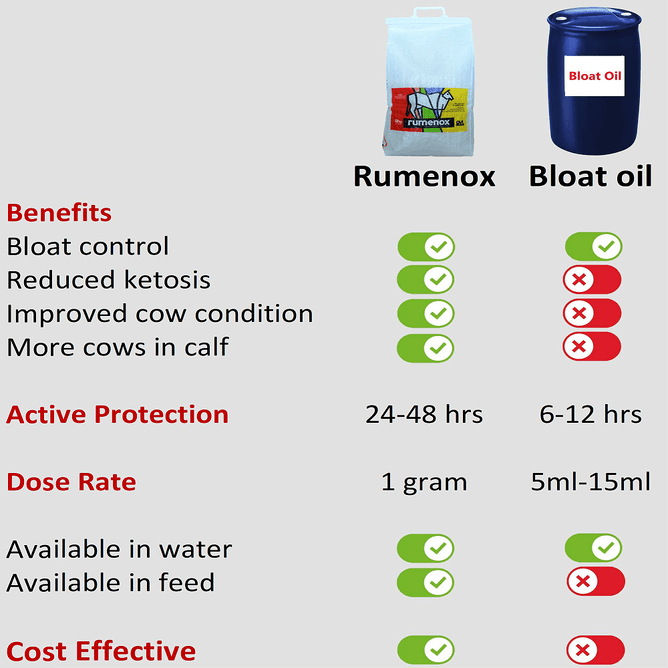Rumenox can help your animals avoid subclinical ketosis.
Managing successful reproductive performance remains one of the most challenging aspects of dairying. Get it right, and it can make a sizeable impact on your bottom line. Get one piece of the puzzle wrong and you pay the price with lower in-calf rates, poor cow condition, and exposure to disease.
One of the most widespread diseases preventing cows from getting in-calf is subclinical ketosis. There is no doubt it’s impacting farms across the Southland region, with 75% of cows within our herds falling victim in spring*.
Subclinical ketosis is a ‘silent disease’ that cannot be seen visually by farmers but quietly exists in the background robbing herds of energy, and affecting their reproductive performance.
Recent NZ studies of subclinical ketosis revealed a decreased 6-week in-calf rate of 7%**, so we really can’t afford to ignore the disease.
Through working with our clients, we see first-hand the effects of subclinical ketosis.
In addition to good feed management and achieving optimum body condition scores, it’s also worth considering introducing specialist products to help support overall animal health at this crucial time.
Rumenox is a game-changer, that is now widely used. It helps cows avoid ketosis so they’re better able to get in calf. We recommend introducing Rumenox pre-calving, or if not practical, adding to the water or feed at calving through to the end of mating.
Rumenox is also widely used throughout lactation for controlling pasture bloat and improving milk protein.
*Data from 2016 DairyNZ and Lincoln University Dairy Farm study
**Study by Compton et al
- Aaron Gill

